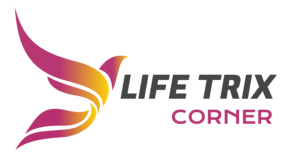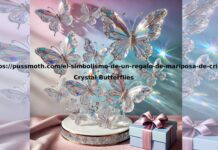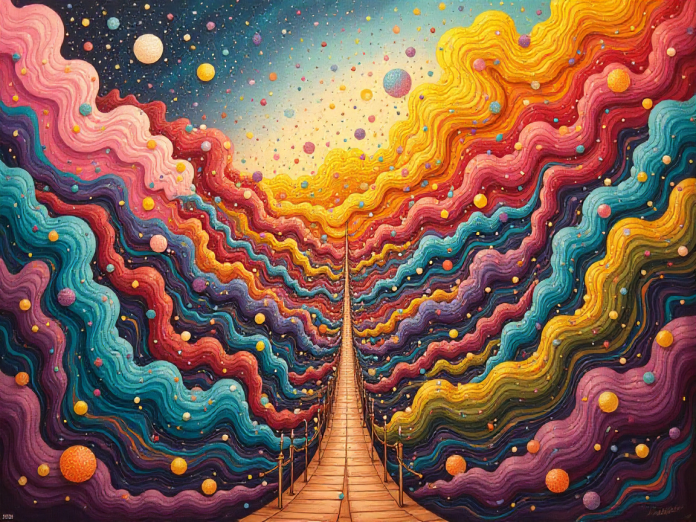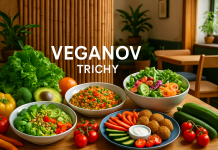Key Takeaway: Maximalist art celebrates exuberant layering, vibrant color palettes, and eclectic juxtapositions to evoke emotional intensity and personal storytelling, countering minimalist restraint with creative abundance.
1. Defining Maximalism in Art
Maximalism rejects the “less is more” ethos of minimalism, instead embodying “more is more.” It prioritizes:
- Visual Density: Multiple motifs, textures, and patterns coexist within a single composition.
- Bold Colors: High-contrast brights, jewel tones, and metallic accents amplify impact.
- Eclectic Synthesis: Cultural references, historical styles, and personal iconography intertwine.
- Emotional Overflow: Works aim to overwhelm the senses, inviting viewers into rich, layered narratives.
2. Historical Roots and Evolution
Baroque and Rococo Foundations
17th–18th century European movements—Baroque’s dramatic chiaroscuro and dynamic compositions, Rococo’s ornate curves and pastel opulence—laid the groundwork for maximalist sensibilities.
20th Century Precursors
- Abstract Expressionism: Jackson Pollock’s drip paintings filled canvases with frenetic energy.
- Pop Art: Andy Warhol’s vibrant repetitions and kitschy imagery celebrated consumer excess.
- Pattern and Decoration Movement (1970s–80s): Artists like Miriam Schapiro and Robert Kushner infused domestic crafts and ornamentation into fine art, elevating decorative complexity.
3. Core Characteristics of Maximalist Works
Layering and Collage
Artists build depth through overlapping elements—paint, fabric, printed ephemera, and three-dimensional objects. Collage becomes a visual tapestry that unravels new details upon repeated viewing.
Ornamentation and Detail
Every inch of the canvas or installation is considered. Intricate brushwork, embellished frames, and sculptural accretions transform artworks into immersive environments.
Typography and Text
Incorporating words, slogans, or found text fragments adds narrative layers and cultural commentary, as seen in works by Barbara Kruger or Glenn Ligon.
Mixed Media Integration
From sequins and beads to neon lights and video projections, artists harness diverse materials to heighten sensory engagement and blur distinctions between art and décor.
4. Mediums and Modalities
- Painting: Ultra-large canvases painted with frenetic brushstrokes or densely patterned surfaces.
- Installation Art: Room-spanning environments—like Yayoi Kusama’s Infinity Mirror Rooms—that fully envelop the viewer.
- Sculpture: Polychrome, multi-textured sculptures layered with paint, textiles, and found objects.
- Digital Art and NFTs: Virtual maximalism leverages animations, glitch aesthetics, and interactive elements to amplify complexity.
5. Contemporary Practitioners and Iconic Works
- Kehinde Wiley: Combines Baroque-inspired backgrounds with portraits of contemporary subjects in resplendent attire, juxtaposing old-world ornament with modern identity.
- Julie Mehretu: Abstract, map-like compositions layer architectural plans, calligraphy, and gestural marks into urban palimpsests.
- Miriam Cahn: Dense figurative compositions rendered with expressive color, tackling themes of body, gender, and violence.
- Shara Hughes: Paints exuberant, surreal landscapes with swirling patterns, flattened perspectives, and neon palettes.
6. Psychological and Cultural Resonance
Maximalist art speaks to:
- Sensory Overload: Reflects contemporary media saturation and the fragmented flow of digital information.
- Identity Complexity: Mirrors individuals’ multifaceted identities, histories, and cultural hybridity.
- Rebellion against Minimalism: Challenges austerity and uniformity, privileging personal excess and decorative pleasure.
- Therapeutic Release: The act of layering and embellishment can serve as catharsis, allowing artists to externalize inner chaos.
7. Incorporating Maximalist Art into Spaces
- Focal Point Strategy: Feature a single exuberant piece against a neutral backdrop to avoid visual competition.
- Coordinated Color Echoes: Draw hues from the artwork into textiles, furnishings, or accent walls to create harmony amid complexity.
- Scaled Accessorizing: Complement large works with small sculptural or decorative objects that share motifs—e.g., patterned cushions or ornamental vases.
- Gallery Lighting: Use directional spotlights to highlight textural details and metallic finishes, enhancing depth.
8. Critiques and Controversies
- Perceived Excess: Detractors argue that maximalism can appear chaotic or narcissistic.
- Commercialization Risks: The style’s decorative appeal can be co-opted superficially in mass-market décor, diluting conceptual depth.
- Accessibility Concerns: Dense works may alienate viewers unaccustomed to high visual complexity.
Conclusion
Maximalist art offers a celebratory antidote to minimalism’s restraint, inviting abundant expression, sensory immersion, and cultural dialogue. By embracing complexity—through layering, ornamentation, and bold palettes—artists craft compelling narratives that mirror the multifaceted nature of modern life. Whether encountered in galleries, public installations, or home interiors, maximalist works provoke, delight, and reward inquisitive engagement, proving that sometimes, more truly is more.















